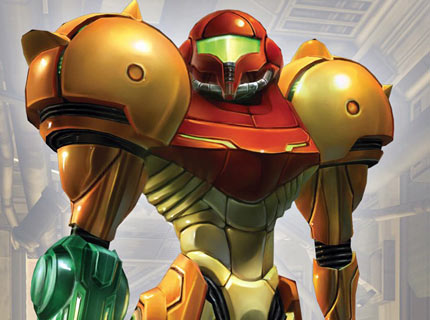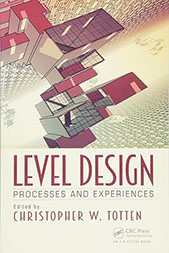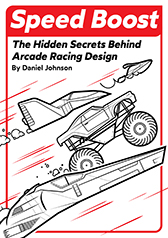And Now For a Return to Your Regular Viewing Schedule
February 9th, 2013
After 2 years of full-time work on top of my regular full-time job and personal commitments, I’ve finally completed my book, Rethinking Games Criticism: An Analysis of Wario Land 4. What was originally meant to be a 120-page warm-up for a full-sized book on Metroid Prime turned out to be a part-critique, part-game-design-text-book, 450-paged behemoth. Yet despite the gradual change in direction, I kept the planned 6-month crunch going for 2 years. While the final push has worn me out a bit, I’m keen to just get on with what’s next as it’s been a year since I’ve written any new material. I have a bunch of upcoming projects that I’ve been stewing over for far too long. I’m not exactly sure which one I’ll start first, so I’ll probably just catch up on my backlog of game design notes—starting with the stuff I can pump out quickly—and see where that takes me. I’m guessing most of this copy will come out on the blog, while other parts will go into the projects. I also have a few posts on writing, editing, and the book itself that will come out over time. So, in whichever form you see it in, expect stuff on:
Tactics Ogre: Let Us Cling Together, Red Steel 2, Metroid: Other M, Final Fantasy Tactics Advance, Wario Land 3, Wario Land Shake Dimension, Star Ocean: Second Evolution, Wipeout Pulse, Bookworm, Critter Crunch, Kid Icarus, Resident Evil Darkside Chronicles, Resident Evil 4, Super Mario Galaxy 2, Shining Force, Braid, DK: King of Swing, Spider: The Secret of Bryce Manor, Cut the Rope, Burnout Revenge, Metal Gear Solid: Ghost Babel, Zelda: 4 Swords Adventures (comments on my Twitter), Harvest Moon, Vanquish, Halo Legends (comments on my Twitter), Uncharted 2, deep reading and the internet, concept albums, player manipulation, and asynchronous multiplayer design in the classroom.
If you’ve got any ideas on any of these topics or games, then I’d be happy to trade thoughts. You can hit me up on email or IM through the following channels:
- Email – danielprimed [at] gmail [dot] com
- MSN – daniel [at] danielprimed [dot] com
- AIM – danielprimed
- Skype – danielprimed
- Twitter – @danielprimed
I haven’t gotten around to chasing up any publishing leads, the past 2 and a half months have been solely dedicated to finishing the final edit. Once I have something concrete to announce, rest assure that I will.
Thanks for your support and patience,
Daniel
E3 2012 Game Design Insights and Commentary
June 13th, 2012
Walking down a hallway, solving an obvious puzzle and mashing a button for a quick time event: sounds like one of the most anticipated games of 2012 to me! Or at least, this was the response by many “critics” in print, the enthusiast press and on blogs to the Tomb Raider reboot showed off at last year’s Microsoft E3 event. The game’s second live demo at this year’s show, a bunch of disconnected; barely-interactive gameplay sequences, only provided further proof of the lack of concrete game design. Yet while the game’s gratuitous brutality has been rightfully questioned, the equally dubious gameplay has avoided heavy scrutiny. The uncritical eye of the majority of game “critics” continues to be distracted by flashy graphics and throat stabbing. (For many of the reasons why, read here. I’ll be exploring some more reasons later). This year’s E3 brought its fair share of Tomb Raiders including Resident Evil 6, Last of Us, boating in Assassins Creed, Star Wars 1313 and Sleeping Dogs—most of which will be hyped beyond reasonable doubt; some of which will probably win something at the game critics awards. Update: Turns out I was right on the money.
While there is growing disapproval around Tomb Raider and other games of its ilk, such voices haven’t reached a critical mass to drown out the marketing buzz. This E3, I compiled notes on the conferences and key games of the show, with a focus on insightful commentary and game design. Although my ideas are limited to trailers and game demos put online, I hope it gives you an idea of the type of commentary we’d be getting if critics valued gameplay as much as they say they do.
Please let me know what you think and what you made of the show in general with the new Disqus comment system. You can sign in with your social media handlers too.
Microsoft’s Conference
- They mush have said “the power of Kinect” at least 10 times.
- Speaking of which, it seems that Microsoft have finally realised how difficult it is to design games for Kinect as most games/services they showed focused on voice commands. In which case, why not just use a headset? It’s great that Microsoft are exploring voice control game design, but it’s such a minor area to throwing so much money behind.
Smartglass
- An ill-considered idea which seems like more of a means to promote Microsoft’s new tablet and OS.
- Without standardised controls, no one will develop games for it and there’s little benefit in spreading information over several devices when they don’t seem to interact much with one another.
- Why not just use a PC to find extra information on music and movies? It’s faster, easier and you can find more specific information.
- The tech, however, is undeniably cool and I love the idea of unifying devices around the TV. There’s certainly a lot of potential here. I hope Microsoft can realise it.
Halo 4
- Considering the gung-ho nature of Microsoft’s press conference, the demo was a bit tepid and lacking cliffhanger.
- Some people noted that Halo 4 seems similar Metroid Prime. This is because some of the new enemies look like space pirates, while the others appear to be natural fauna. There was some visor switching going on too.
Tomb Raider and Resident Evil 6
- Both of these games look ridiculously bad. I think that game designer Matt Glanville put it best on Twitter:
“I’d get excited more if all the effort/money that went into spectacular-but-shallow set pieces was diverted to deepen the core mechanics. Look how much Mario does with a simple JUMP mechanic. That’s what I want to see from shooters: versatile core mechanics. Instead you get sequences that don’t gel with the core mechanics, so they get simplified into something that is incoherent with the game. We all know why they exist though: eye candy for trailers, to shift units.”
Dead Space 3
- Was partly leaked to death several months prior. I think it got lost in the shuffle, especially considering how similar it looks like Gears of War/Lost Planet.
- I guess Visceral didn’t have much choice, but to make the series more action-orientated. You can’t iterate much on well orchestrated jack-in-a-box scares.
- The large worm-like creature looks like the final boss from DS1…great.
Farcry 3
- What a wicked trailer, but let’s be honest, it doesn’t look like sanity is incorporated into gameplay aside from tripping out the visuals.
- The 4 player co-op at the Sony presser looked pretty last gen.
Metal Gear Rising
- The story looks like Platinum added a layer of Vanquish-esque McCheesemo to Kojima’s already bad writing. MAKE IT RIGHT.
- The sword slicing segments are slowed down; allowing the player to cut cleanly, have transparent blue honeycomb highlights; for visual reinforcement, appear isolated or to run on a cool down timer; preventing the player from abusing the mechanic, and the blade leaves a shadow on the target; making it easier to judge depth. Clean game design. By comparison, in the pre-Platinum Games version it looked like Raiden could cut whenever the player wanted, following the original “cut at will” slogan. Putting the dexterity-heavy slicing with the analogue stick front and centre probably created a lot of design issues which saw the original version eventually get scrapped.
- I do hope that the other slogan, “cut anything”, still applies and, based on the trailer, it appears to be the case. How much so, I guess we’ll find out later.
Sony Conference
- Sony started off talking about mortality and ended with a man begging for his life before getting shotgunned in the face.
Last of Us
- Hand-to-hand combat looks contextual and heavily automated. Lots of long animations taking the player out of gameplay.
- The enemy AI looks heavily scripted too.
- The menu reveals light inventory elements.
- Few survival mechanics were shown off, which makes me think that, despite its flaws, I am Alive, may be a more progressive post-apocalyptic survival game.
- The developers were supposedly inspired by The Walking Dead, which I’m currently reading, yet Walking Dead is hardly this senseless.
Beyond
- What a statement by Sony to put this as their first act.
- I was really excited for this game and then they just showed a cutscene, WTF?
Call of Duty Vita
- “For the first time ever you’ll have a AAA first person shooter in the palm of your hands with a beautiful 5 inch screen, dual analogue sticks and seamless online connectivity” Resistance: Burning Skies only came out last week guys…
God of War: Ascension
- The Wikipedia page describes several of the changes made to the combat system, all of which sound great, albeit, hardly the overhaul the series sorely needs.
- I’m curious how they player will know that they’re still in control and what inputs they can make when the visual prompts are taken out of the QTEs.
- I don’t like that for the existing QTEs the face button icons are all orange. Colour makes it easier for the player to read the prompts. This is why QTEs on the Wii are so horrible. Putting the prompts to the side of the screen, corresponding to their placement on the pad, makes them even harder to identify.
- I like how the grapple pull mechanic has been remapped to the triggers, which is more intuitive. The animation doesn’t look as slick as in God of War III though.
- Sub-weapons that Kratos can take from enemies: Sensible idea as the combat system needs constant variety to keep it interesting. Mapping it with the other face buttons, to circle, gives it precedence in the player’s consideration set.
- It would be cool if Kratos could disarm enemies. For example, when not holding a sub-weapon, Kratos could stun an enemy with a hard attack and then press circle to disarm them.
- It would also be good if the sub-weapon degraded over time, this way, the player would be forced to use a variety of weapons.
- Kratos didn’t have the block-and-re-fire-energy mechanic in the demo. I hope they keep it in as Kratos has few defensive moves, let alone moves that require the player pay attention to the enemies’ attack patterns.
- Looks like spells and/or the rage moves return.
Nintendo Conference
- Most of the WiiU games they showed were already mentioned, prototyped, featured in montages or name dropped by developers last year. The lack of surprises is baffling.
- After wheeling John Richettello out last year to spout praises for the system, EA only showed Mass Effect 3 this year.
- Pikmin 3 appears to benefit as much from the Wiimote as it does the gamepad. Similarly, New Super Mario Bros. U seems to innovate as much with new game ideas (coloured Yoshis, squirrel suit) than gamepad and online functionality. Nintendo Land looks just magic and makes the most use of the new console and its controller. Unfortunately, fair or not, “hardcore” gamers don’t find a selection of smaller games as convincing as a “full” game. A fully-featured single player game by Nintendo’s first party studios which uses both the social and gamepad innovations of the WiiU would have gone a long way to appease these people and make a stronger case for the system.
- The criticisms made against the WiiU’s 3rd party support are all about parity with the other consoles, which will naturally take some time to happen. Still, it’s disappointing that more 3rd party “ports” aren’t making their way to the console at launch. Why isn’t Call of Duty: Black Ops 2 going to be on the new console at launch? If Activision can downgrade the Xbox 360 version to the Wii, then they can surely port it to the WiiU. With this said, Nintendo had the most 3rd party exclusives at the show and almost all of them look new and innovative. Further, the extra features and gamepad elements of the ports are in many ways equivalent to exclusive DLC. By virtue of developing for the gamepad, developers offer extra exclusive content to the platform. In terms of fresh ideas, I think that the 3rd party titles haven’t been so comparable to Nintendo since the DS.
- The small talk with the Ubisoft and Warner Bros. CEOs was just…awkward. At least they were warmly greeted onto the stage though and with titles too, unlike the Capcom guys at the Microsoft press conference.
- If Miiverse’s note system is closed or can’t connect to existing social networks, it will fail.
- Why did Nintendo need to bring in the 3DS guy just to show off 3 games that we already saw last year? They could have shown Project P-100 in that time.
- Nintendo Land should have swapped places with Pikmin 3. Nintendo should have focused less on the amusement park aspect of the game which just looks abhorrent. A fire work display? I wanted to vomit.
- Why not show Game and Wario at the conference?
- I hated the campy pre-show video with Non-specific Action Figure, but absolutely loved it on second viewing. E3 needs more camp.
- They need to put a Non-specific Action Figure trophy in the next Smash Bros.
- Demos at the 3DS Software Showcase were perhaps better suited to their E3 hub as they went on a bit long, but it was nice to have the games discussed in detail. Why not announce Fire Emblem as well? It freaking stormed the Japanese monthly charts on release, outselling the other 19 titles after only a week on the shelves.
ZombiU
- Dark Souls-esque passive online, where if one of your friends dies in their game, their zombie appears in yours (with their name overhead).
- Unlike Resident Evil 6 and Last of Us, ZombiU actually seems to be designed around survival and horror. Here’s 3 examples:
- You play a variety of characters who inevitably die throughout the game. After one character dies, the player embodies a new character and must relocate their previous self to recover their lost goods. That is, the player takes on a unique role as an overseer and uses the information gained from this outsider perspective to help the different characters progress through the story. I love the idea of this daisy-chained narrative.
- Because the player’s looted inventory is their “power”, so to speak, the player, the collective unit of the individual characters, starts off weak and slowly becomes more powerful.
- At various points the player will need to ransack lockers and lock-pick doors among other things, which are done on the WiiU gamepad. While the player is looking down at the controller, the TV screen frames the character in a 3rd person perspective which allows the player to see if any zombies are approaching from behind. Simulating real life, looking up from the gamepad allows the player to “peak over their shoulder”. This set up facilitates tension and all manner of scares without the need to handicap the player’s movement and attack mechanics.
- No idea why they showed an ugly CG trailer in the press conference.
- When zombie Reggie moved his face in the press conference, you could see the edges of the texture map.
Paper Mario: Sticker Star
- The way stickers are used as battle commands, items for side-missions and ways to interact with the environment looks magic. Not only does it unify these disparate parts of the game, but it removes the text commands from battle.
New Super Mario Bros 2
- I’m concerned that the 1 million coins conceit will ultimately devalue the coin as a game element.
- Grouping coins together creates a stronger pull for the player to scale the difficulty.
- With 2 players, the camera only tracks the player in front, pushing the other player off-screen. This forces the 2 players to stay together and communicate. What was likely a consequence of the 3DS’s low resolution screen has been turned into an advantage. This is like what Miyamoto said: one solution can often solve many problems.
New Super Mario Bros U
- Coloured Yoshi’s return. From the trailer one can see that: the yellow Yoshis are light sources, blue Yoshis spit out bubbles which act as platforms and trap enemies; turning them into coins, and the pink Yoshis act as inflatable balloons.
- In the Iwata Asks videos, the terrain has red outlines around it. So it seems that the player with the gamepad will be able to manipulate the terrain. This is far more interesting than the spawning platforms they showed off.
Game and Wario
- I wish they had videos on Nintendo’s E3 portal explaining each of the games.
Rayman Legends
- The player using the gamepad takes the role of a green fly character. Touching anywhere on the screen moves the fly to that position. Because the player on the game pad has a variety of things to interact with at the one time, the fly is constantly twitching around the screen. This would normally make the avatar’s animation appear jerky and distracting, however, it perfectly fits the way flies often buzz in and out of our vision, and works with the animation and voice overs to further exaggerate the zany character.
Nintendo Land
- When Nintendo first unveiled the name, the amusement park hub and Katsuya Eguchi started talking about his love for theme parks, I hated it. It just seemed too sickly sweet.
- The amusement park is cluttered, ugly (Banjo Kazooie: Nuts and Bolts anyone?) and doesn’t even look like an amusement park. It’s a giant floating disc with icons. If they never said it was an amusement park, I probably would’ve never realised.
- After watching some videos though, I must say that the individual games are impressive; lots of thoughtful nuggets of good game design.
- I’m most excited about the Donkey Kong game, although, it might be tiresome holding the controller up at the TV all the time.
- For the Animal Crossing game, I love the idea of handicapping the player with the gamepad by designating the control of the 2 guards to the 2 analogue sticks. This way, they need dexterity and knowledge to win.
Batman: Arkham Asylum Armoured Edition
- On the surface, the gamepad implementation is varied and well suited to the existing mechanics, and it seems that they’ve made smart decisions in reworking the game for the WiiU. However, it all hinges on the small details, so I’m cautiously optimistic.
- Graphics don’t look so crash hot. Seems like they farmed it out to the B team.
Misc
- Wii Fit U – The tobogganing game requires that you lie on the balance board. Controlling a game with your ass, that’s innovation.
- Castlevania 3DS – Slick visuals. Made by Mercury Steam, the developers of the console reboot.
- Watchdog – Refreshing because it is relevant, something which can only be said for..well, maybe just this game at E3. It’s pretty amazing how few mainstream games are about contemporary issues. The gameplay demo looked far less impressive than the initial trailer suggested.
- General – Why don’t Sony and Microsoft have isolated game demonstrations with explanations on their portal sites? It would have helped me write more about their games.
Metroid Prime – Play Notes Overview #1
June 2nd, 2011
And now a quote from Twitter:
I’m thinking that by E3 I should be able to finish my first play through notes of Metroid Prime. Up to Magmoor Caverns now.
Yeah, I sure do like to dig holes for myself, don’t I?
Truth is I’m finding it much easier and more enjoyable plugging away at my Chinese blog at the moment than continuing on either one of these mammoth projects I’ve burdened myself with. I enjoyed writing up the Wario Land 4 posts, but the thought of whipping everything into perfection is an intimidating task to say the least. I’m thinking that I hold off on that for a little longer. On the other hand, writing about Metroid Prime is a passion project. Even as I take notes I’m so caught up by this game and long to study it further. The problem is I still haven’t found my hook for the project. A complete analysis would be a laborious task indeed and not exactly palatable for a general audience, so I need an engaging format that will hold the information of a text book while being immediately readable.
Format or no format, I need to hone my analysis, so here’s a summary of my key observations so far, from the Pirate Frigate through to Magmoor Caverns.
Foreshadowing
Samus and the player begin their adventure on a Space Pirate frigate. In typical Metroid fashion, you’ve walked into a situation that’s already happened and are left to piece together the remnants. The frigate serves not just as its own segregated tutorial level, but also foreshadows the rest of the game. By being observant from the start, the player is given a gist of what’s to come. Here are some examples:
Space Pirate’s plan – As the player explores the frigate they learn, through scanning the environment, that the space pirates have been using native fauna from the nearby Tallon IV as scientific test subjects for a hazardous substance known as phazon. The results of these experiments are in turn what has caused the disaster to occur and thus bring Samus to the frigate. The data scans reveal that the pirates are present on Tallon IV, continuing their research. Although only partly fleshed out through text and a few images, the outline for most of Metroid Prime’s narrative is established.
Enemies – The laboratories where the pirates have been conducting these experiments also house test-tubed creatures from Tallon IV. The player can walk up to and view models of the creatures who will later act as enemies of Tallon IV. Some of the staple enemies can be scanned as well, but only for temporary data. The lab acts as a sort of museum for pre-viewing. Meta Ridley also makes a presence in a cutscene which leads the player to the inevitable conclusion that they’ll have to once again beat Ridley at one point.
Abilities – On arriving at the frigate, Samus’ suit is equipped with all of her basic abilities which is then taught piece-by-piece before she loses it all at the end of the chapter. On Tallon IV the player slower reacquires all of the abilities that they had previously lost and more. This type of pre-teaching is important later when stringing the player along the game.
Parasite Queen – The Parasite Queen is the height of the experiments and is mostly responsible for the mayhem that had erupted onboard. Details about the queen are littered throughout the confines of the frigate in a sort of suspenseful horror fashion, the player slowly connects the dots before being confronted by the Queen. Unlike the other points the foreshadowing isn’t tied to Tallon IV, only in the introduction.
Technological Trickery and Gameplay
A lot of games parade different areas of technology, like facial masking, physics etc, for technology’s sake and not much else. Metroid Prime is a runway of neat effects that were pretty new and flashy at the time, but each piece of graphical trickery plays a significant part in the gameplay. Again, examples:
Light – Phasites are harmless little bugs which float around and emit light. They populate darkened rooms. If the player shoots and kills a Phasite then they’ve effectively killed a light source. The trick is that the player needs to use the flow of the Phasites to navigate through these darkened paths.
Dust – Scarabs burrow below ground and then leap out to attack any threats that they feel moving along the ground surface. As they dig to the surface, the ground rumbles and dust stirs up drawing the player’s attention to the threat. The dust effect is used to warn the player.
Obscuring of visor – Bug splatters, electrical zaps and fogging up of the visor all directly affect gameplay as the player only sees through the visor.
Enemy Distinctions
Metroid Prime has some fantastically detailed environments. This, however, can make it difficult to identify enemies. In order to be distinguishable amongst the detail many enemies are painted in tonally darker or less saturated colours marked with strong colours at their weak points. War Wasps have painted stingers. Turrets have bright red lights to show that they’re active. Eyons shoot green rays of light. When Shriek Bats dive at the player a whirl of colour surrounds them.
Ideologies
Scattered throughout the Chozo Ruins is the parallel narrative of the Chozo’s history told through the lore scans. By scanning scriptures marked on walls the player pieces in the story as they play. The first thread of scans sets up the Chozo as the civilisation side of Metroid Prime‘s underlying civilisation vs technology theme. Later, the Space Pirates occupy the technology side of the argument. The game begins with civilisation (Chozo Ruins) and then ends with technology (Phazon Mines).
First Person Dynamics and Enemies
Set in the first person perspective, Metroid Prime‘s core dynamic is positioning and searching the 3D space. 2 of the core mechanics in the game, look and lock-on, work harmoniously with the natural dynamic of the perspective, breaking the process of looking into 2 steps.
The lock-on is important because it maintains the position of the target, so that the player isn’t always frantically trying to find a target. This streamlines a lot of the hassles common in exploring other first person games, especially those for the PC. Anyways, I’ll get into this properly later, it’s all very interconnected.
My point is that the enemies are designed to get the player looking and locking-on or moving, looking and locking on. The wasps float around in the sky, the scarabs dig underground, the smaller swarm enemies circle the insides of tunnels, the larger enemies have weak points located away from the player—each enemy type is meant to get the player to look and lock-on in unique ways.
Environment as the Patriarch
The richest character in the game is the environment. What is key about the environment in Metroid Prime is the way in which it both facilitates and (contextually) justifies the challenges of the game while also sketches out a lore and ecosystem. The environment of Metroid does 10x the work of the environments in most other games, so just to unpack that a little bit…
The environment obviously facilitates play. It’s the way that the environment is used to justify everything that makes it so unique. Instead of throwing up clear road blocks to stop the player from advancing to a certain area (ie. you need to kill 20 of this to pass), Metroid Prime will use the environment and it’s connection to Samus’ abilities to limit progress in an organic and well justified way. For example, height, a poisoned water stream, an infestation of weeds or the pressure from heat will act as road blocks. In this way the logic of the game is very naturalistic. It never feels as though the developers are artificially constraining you, the player.
The lore and ecosystem of the land is fleshed out through the scan mechanic which is effectively an all-in-one narrative, hint and activation mechanic. What you can scan is in the environment, so the environment is the narrator of Metroid Prime‘s story. Reading this story requires looking through the space and engaging with the natural dynamics of the perspective. And so the circle of harmonisation is complete.
And further on organic environments
I really dig how the topography of the environment isn’t broken into units or boxes, or at least it doesn’t feel that way to the player. The rooms take on a variety of rugged shapes. The floor dips and raises. It’s all very organic. To think that Metal Gear Solid 3 struggled with creating such organic environments, limiting it’s FPS count to just 30fps even after the PS2 tech was well understood by developenv and Metroid Prime does it so effortlessly.
Slow Down
The first part of the Metroid Prime is designed to slow players down. The focus is placed on Samus’ eyes and not her legs. That is, the game coaxes the player into being explorers. Blast Caps are placed on platforms prompting players to shoot first, wait for their dangerous smog to clear and then jump. War Wasps get in the player’s face intentionally, so as to get the player to seek out and destroy their nests. Shriek Bats can easily spear into players if they move through rooms too hastily—the best approach is to move cautiously and attack them while they’re in wait. Runes are used as locks to doors and are spread throughout a single room to get the player scanning the environment in all different directions. All elements of Metroid Prime, the tight spacing of most rooms, enemies and scannable items all enforce this more cautious type of play.
And that’s a wrap for this first overview. I feel like I’ve only scratched the surface with each of these headings. If you have any suggestions for a hook for this project, please let me know in the comments below.







 Game Design Companion: A Critical Analysis of Wario Land 4 - $7.99
Game Design Companion: A Critical Analysis of Wario Land 4 - $7.99 Level Design: Processes and Experiences
Level Design: Processes and Experiences Speed Boost: The Hidden Secrets Behind Arcade Racing Design - $5.99
Speed Boost: The Hidden Secrets Behind Arcade Racing Design - $5.99 Adventures in Games Analysis: Volume I - $5.99
Adventures in Games Analysis: Volume I - $5.99







